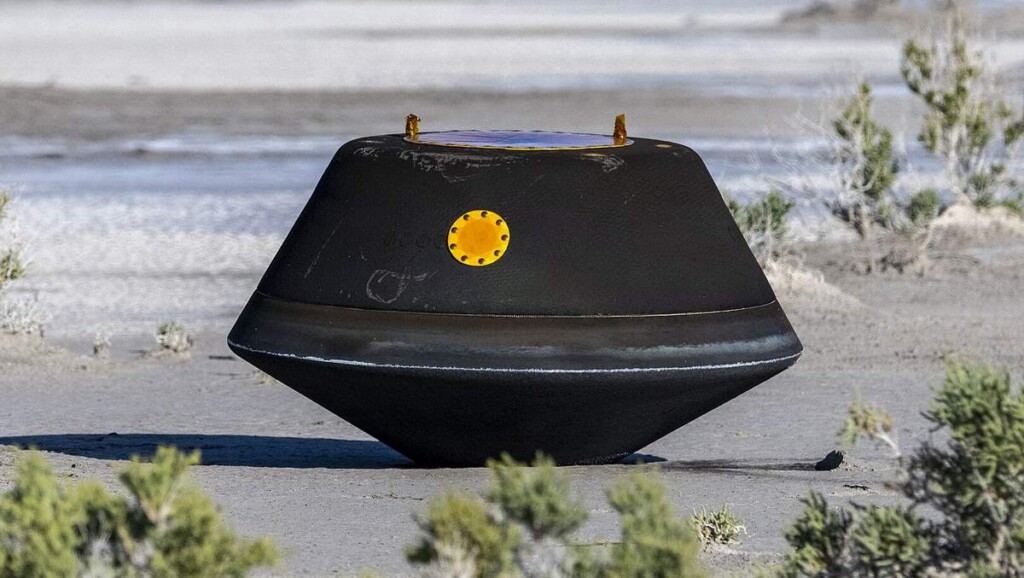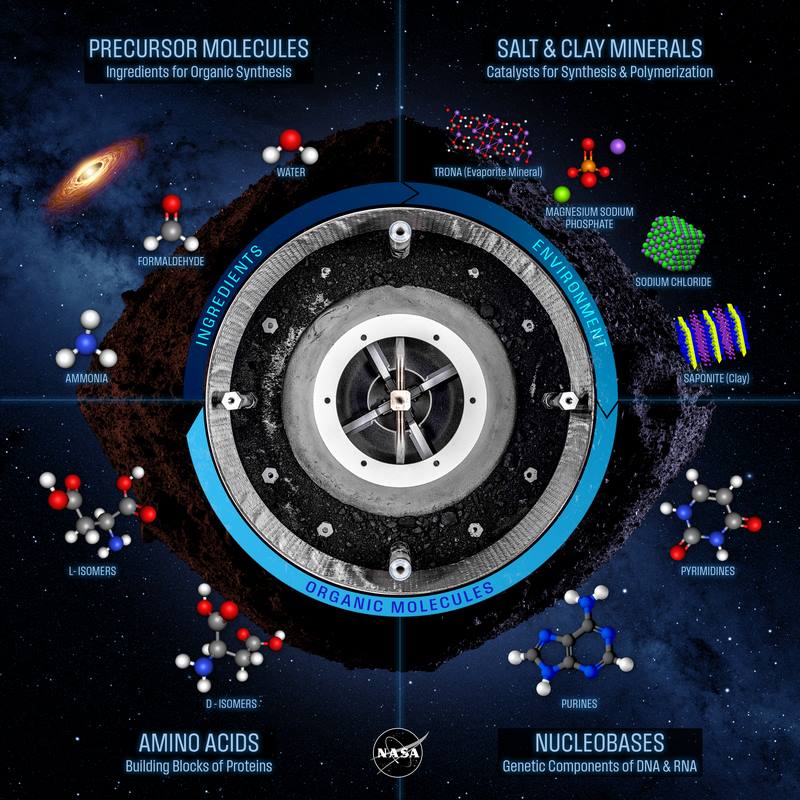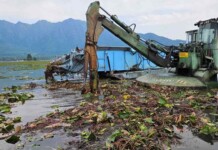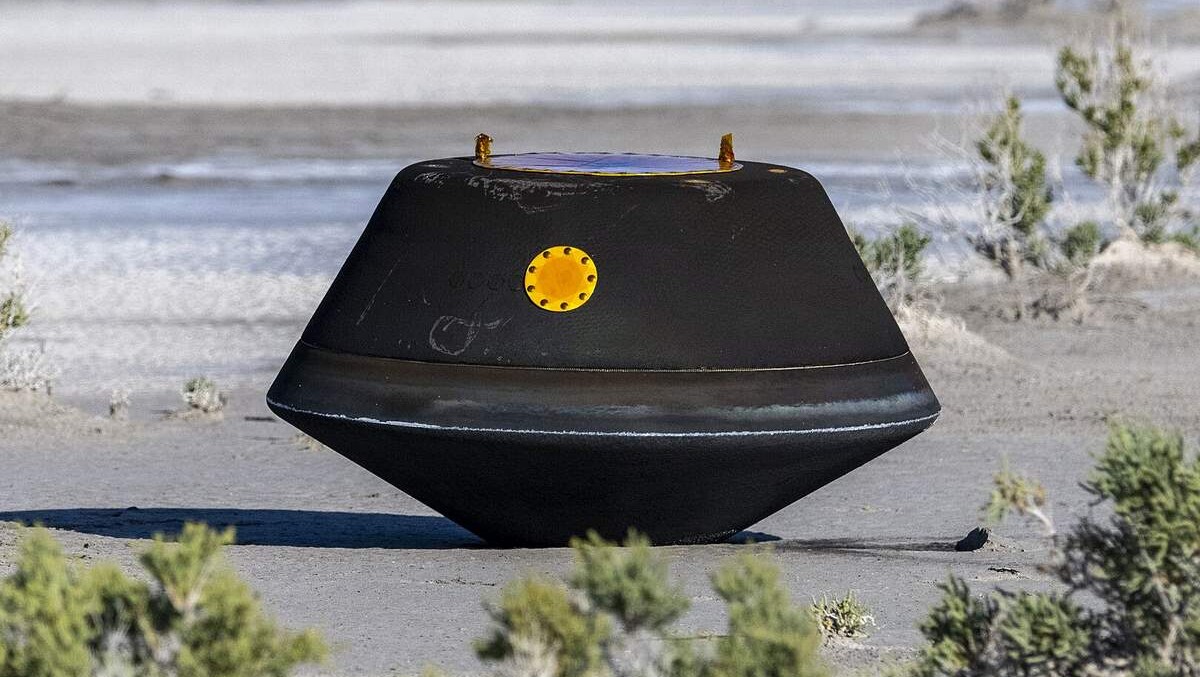
In 2018, a NASA mission arrived at the near-Earth asteroid Bennu to collect pristine samples to be analyzed on Earth.
It turns out, there have never been more ingredients for life identified in a single extraterrestrial material of any kind. Indeed, Bennu carried all five DNA and RNA nucleo-bases, and enough amino acids to look like a multivitamin supplement.
The mission was called OSIRIS-REx, and was the first in human history to land on an asteroid and bring a sample back from its surface. Inside, 14 of the 20 amino acids contained in life on Earth, including all 9 of the essential amino acids, blended in “interesting ways,” with another 19 non-protein amino acids that are rare or absent in known biology.
“We now know from Bennu that the raw ingredients of life were combining in really interesting and complex ways on Bennu’s parent body,” said Tim McCoy, the Smithsonian Museum’s curator of meteorites and the co-lead author of the new paper. “We have discovered that next step on a pathway to life.”
Bennu’s parent asteroid, which formed around 4.5 billion years ago, seems to have been home to pockets of liquid water. Bennu was also found to be rich in nitrogen and ammonia-bearing compounds and the new findings indicate that water evaporated and left behind brines that resemble the salty crusts of dry lakebeds on Earth.
The theory of how life emerged without the existence of a creator is known as prebiotic organic synthesis, which is believed to have most likely taken place in liquid water with this sort of elemental configuration to play with.
The Bennu samples were rich in sodium carbonate, which had never been found before in meteorites and asteroids. On Earth, sodium carbonates often resemble baking soda and naturally occur in evaporated lakes that were rich in sodium, such as Searles Lake in the Mojave Desert.

Bennu’s brine differs from terrestrial brines due to its mineral makeup. For example, the Bennu samples are rich in phosphorus, which is abundant in meteorites and relatively scarce on Earth. The samples also largely lack boron, which is a common element in hypersaline soda lakes on Earth but extremely rare in meteorites.
ON THIS TOPIC: Scientists Studying Asteroid Sample Say it Could Have Come from Ocean World
The researchers posit that similar brines likely still exist on other extraterrestrial bodies, including the dwarf planet Ceres and Saturn’s icy moon Enceladus where spacecraft have detected sodium carbonate.
MORE FROM THE SEARCH FOR LIFE: Tiny Planet Makes Big Splash as Surprise Study Shows it May Be Producing its Own Organic Compounds
While the Bennu brines contain an intriguing suite of minerals and elements, it remains unclear if the local environment was suitable for crafting these ingredients into highly complex organic structures.
“We now know we have the basic building blocks to move along this pathway towards life, but we don’t know how far along that pathway this environment could allow things to progress,” McCoy said.
SHARE This Milestone Moment In Science’s Search For Life In Space…




















